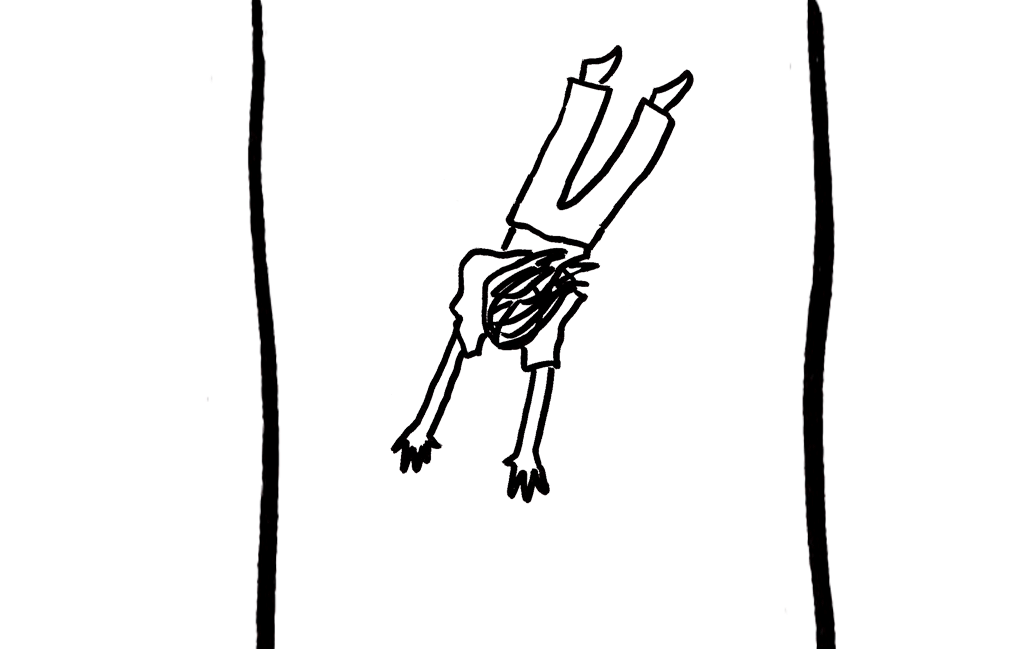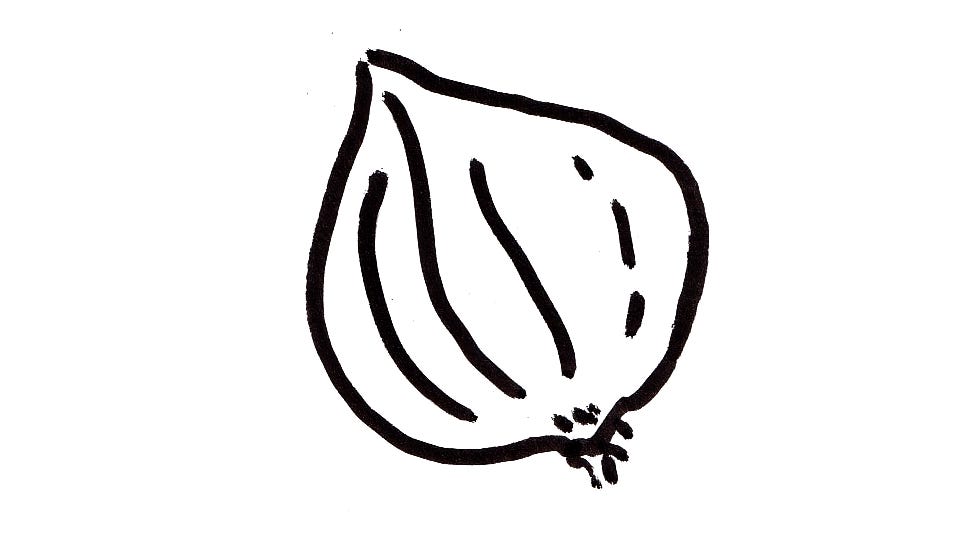Welcome! This issue of the Ten Times is brought to you by internet comment rabbit trails.
I went on two journeys this month, but both started on Cup of Jo. Have you poked around there? It’s a warm, friendly blog with posts about everything from living alone to home tours to new spring outfits. Nearly every post is bursting with reader comments. And let me tell you, at least 97% of those comments are lovely. It kind of feels like being in a big group chat with cool ladies.
This month, I was taken by the week of outfits from Kate Lindello. She’s got these wonderfully colorful looks, and being Minnesotan, tops them off with a great knit hat.
Most outfit pieces are linked—you can buy a similar skirt or socks or whatever. But the hats! No link, just charmingly notated as “Knit by my friend Emily.”
Kate shares that she chooses yarn every year, Emily whips up a hat, and it arrives in Kate’s mailbox.
First: Don’t you want to live in a world where your friend Emily makes you a delightful hat every year?
Next: The comment section was clamoring. What pattern does Emily use?! We want to knit our own! Some helpful commenters dug up patterns that looked similar and shared links. And then friend Emily herself chimed in with her hat recipe:
i’ve never used a pattern for these hats and i make it up as i go with every single hat (i’ve probably knit 100 of them!).
i like using a worsted weight wool yarn (or an alpaca/wool blend, never synthetics) on about a size 7us needles. i cast on around 100 stitches (depending on the head size for who i’m knitting for) (the total number of stitches needs to be divisible by 4 for the ribbing to work). i knit 2 in one color and purl 2 in the other color and carry the yarn behind. i knit in that pattern until i think it’s about 3/4 done and then very haphazardly and recklessly begin to decrease, lol. i get it down to as little stitches as possible then cinch it tight.-Emily
She makes them up! I love the casualness of the whole thing, finishing up “haphazardly and recklessly.”
Obviously, I wanted to make one of these hats.
I pawed through my yarn stash.
I didn’t have colors I was excited about in the right quantity to knit a hat, but I ran into an unmissable project.
The sweater I promised my brother Sam.
We’d agreed to trade: He’d make me a pair of pants, I’d make him a cabled sweater. He finished the pants, I got the sweater ready enough for a try-on. We discovered that the sleeves had way too much fabric. I’d thought they might be sort of 80s oversized, but they were simply TOO BIG.
Reknitting the sleeves seemed overwhelming back then. I’d just knit them! Now I’d have to do math and a whole bunch more knitting? I stuck it in a project bag for later.
So here I was, later, itching to knit, but thwarted on my hat plan. Might as well pick up the sleeve project again!
Here’s the thing. I made up the pattern in 2022. I incorporated cable patterns I’d found in a library book, but the whole thing was pulled together like an Emily hat. I had notes somewhere in a sketchbook. The notes had nice things like measurements and schematics and stitch counts. I couldn’t find them.
Grumpily, I started picking apart the too-big-sleeve seam to lay it flat and get a closer look. If I just had those notes, It’d go so much faster, I thought.
Unpicking a seam takes long enough to cajole yourself out of the dream world with clear notes and into begrudgingly moving forward with an old sleeve and some even older know-how.
Knitters call it reading your knitting. You can carefully count the stitches and rows, making out the approximate amount needed to reach your goal dimensions. You can interpret whether you’re seeing a knit or purl stitch, and how many of each make up a patterned section. You can jot down your findings and find your way to a sleeve.
As I set to it, my sour attitude smoothed. It’s stretchy math, I reminded myself. Pretty close is close enough in knitting. And so I began to put aside my craving for the 2022 steps and created a good pattern for this moment.
The first sleeve took one Saturday afternoon. I’ve got a good chunk of the second underway.
It took 2.5 years to get here, and it was easier than I thought once I just started.
More Trails
Okay, back to Cup of Jo comments. On a post about the things people show their partners when first dating, a commenter named Amanda shared:
This is extremely niche, but there’s a book from the ’60s called The Supper of the Lamb that is a weird mashup of food writing and theological text written by an Episcopal priest. It’s one of my favorite books, and anyone else I know that’s read it has tended to be good people.
This sounded bonkers and great (and I wanted to be good people!) so I ordered a copy.
If the above description sounds good to you, too, please quit reading this newsletter and find The Supper of the Lamb instead.
I forgot that smart, complex books can also be wildly funny! This thing races around, sentences wildly alive. Good thoughts from wildly varied disciplines are crammed into a singular volume and the reader gets to revel in it all. It reminds me of my own capacity as a reader and thinker.
And as a cook. For a long stretch, I’ve wished away the task of cooking, thinking of the dishes and clatter and dirty countertops as a hassle. Just this last week, I grabbed a meal planning book from the library. But as soon as I scanned the opening pages, my eyes glazed over.
I didn’t need to hear how quickly I can get soup on the table. I needed to hear that “the world may or may not need another cookbook, but it needs all the lovers—amateurs—it can get. It is a gorgeous old place, full of clownish graces and beautiful drolleries, and it has enough textures, tastes, and smells to keep us intrigued for more time than we have.”
The Supper of the Lamb starts with this dedication and ramps up from there:
To my wife: The lightning behind all this thunder.
There’s chapter about spending an hour with an onion!!
As nearly as possible now, try to look at it as if you had never seen an onion before. Try, in other words, to meet it on its own terms, not to dictate yours to it. You are convinced, of course, that you know what an onion is. You think perhaps that it is a brownish yellow vegetable, basically spherical in shape, composed of fundamentally similar layers. All such prejudices should be abandoned. It is what it is, and your work here is to find it out.
And this note about making stew:
Why do I put the garlic in so late? It is a personal prejudice. I happen to like my stew made with the soul of the garlic, not its cremated remains. Of course, if you prefer dishes that taste like overdone garlic bagels, go ahead and put it in earlier.
I don’t want this book to be over.
I’ve gotta go read it, bye!
❤️, Ten
ps. what books are taking you for a trip these days?
Elsewhere
I forgot how weird and great Go, Dog. Go! is. This post by
was so, so fun.Mac Barnett and Shawn Harris grew up together and now they collaborate on kids books. In this podcast conversation, they say they’re always trying to make each other laugh with their stories. Isn’t that the best kind of collaboration?
Carly Ayres’ piece on mapping strengths and weaknesses was super helpful in thinking through pursuing meaningful work.
Good word: Prolix / adjective / definition from Google/Oxford Languages: (of speech or writing) using or containing too many words; tediously lengthy. E.g. "he found the narrative too prolix and discursive"
I just want to stand in front of one of Jennifer Candon’s quilts and soak it up.















Okay, I really love that I saw both of these comments on CoJ and now we're here :-) I should track my own CoJ rabbit trails because there are maaaannnyyy! This was a delight from start to finish. If I were to read The Supper of the Lamb, does it matter if I'm not religious anymore? Will I be able to enjoy it still?